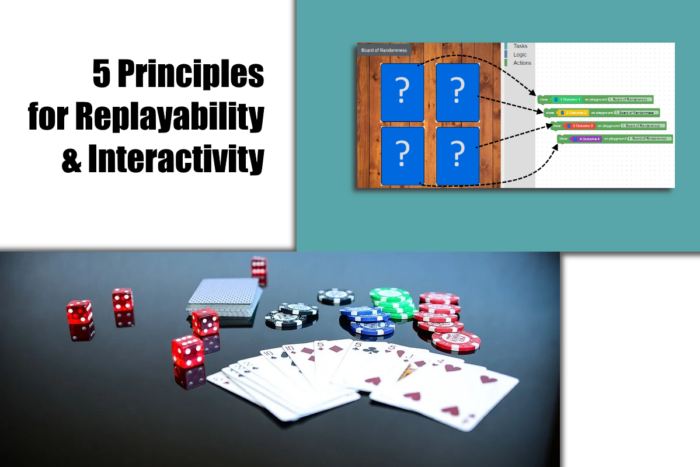If we look at team-building games in general, we might find one major lack:
Team Building Games are too often single-usage.
What does it mean? It implies that once a game is played, it can’t be replayed.
It’s a common problem for such games, but also for escape rooms or local tours. However, this whole problem doesn’t really exist on board games for instance.
Sometimes, we’re content in having a non-replayable game for our clients. But other times, it would help us make reduce the game development time. That might be helpful if you need to retain your client base.
⚠️ Before we go further, please acknowledge that this article will provide quite advanced content. If you do not understand, then it’s fine. If you want to learn, feel free to have a demo with me. ⚠️
Now the question is:
How do we create a replayable game?
(with Loquiz, of course 😎)
The first answer is interactivity. By adding interactivity, you widen the enjoyment within your game.
The second answer is your imagination. This will be your limit to create a replayable game.
And the third answer will be exposed under 5 principles that I’ve conceived:
So here are the 5 principles:
1. The game needs to have randomization.
What does make a board game session different from another, using the same materials? The randomization.
Quite often, this goes through the randomness of cards distribution. Or it also goes with a dice. Or a coin.
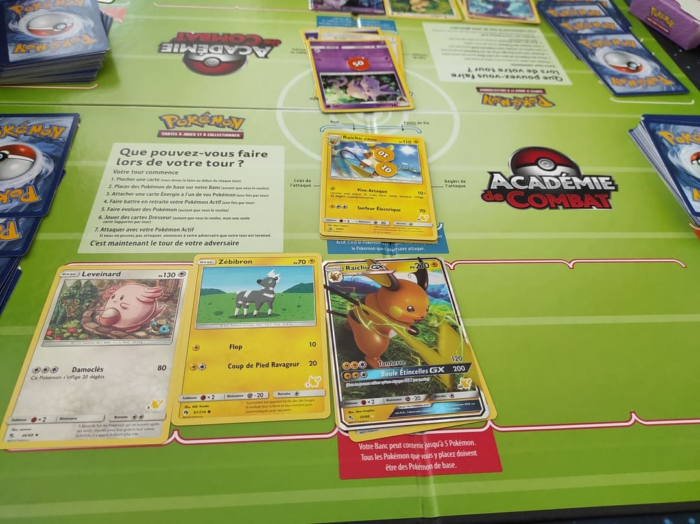
Using Loquiz, you might not have physical cards or randomizers like in a videogame. However, there are several ways to define randomness using the Creator.
Randomness #1: Through the tracks

“On track x” means that something happens depending on your order of connection, “x” is the order of connection.
If you’re the 2nd to connect, you’ll be “On track 2” and open the Task “Outcome 2”. If you’re the 6th to connect, you’ll also be the “On track 2”.
The randomness comes from the fact that nobody knows in which order do they connect in a game.
Randomness #2: Using the QR
What if you had physical cards in real life after all? You can add QR codes to these cards. Then you can shuffle the cards and randomly distribute them to the players.
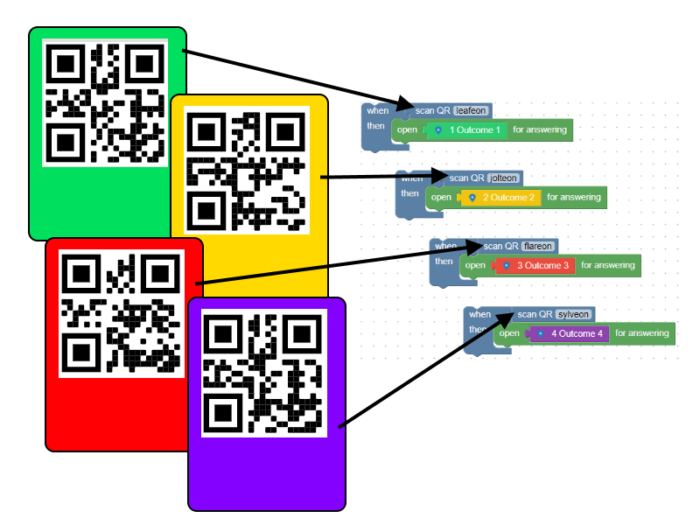
Imagine that each of these colorful cards is physical and distributed randomly to the players. This is how you can add some randomizer with Loquiz.
Randomness #3: Using the playground
This one is going to be a little bit tougher.
Imagine that the previous cards are not real, but… Virtual. Let’s use the Playground to make it happen:
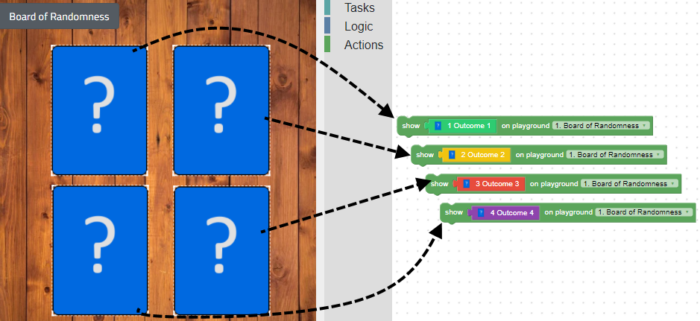
The icons are all the same. The player has no way to know what outcome it will give. Thus, it adds some randomness.
Randomness #x: Combine randomness methods
You can combine 2 or 3 of the way exposed previously. My favorite one is to combine the “On Track” and the Playground. Let me show you an example right here:
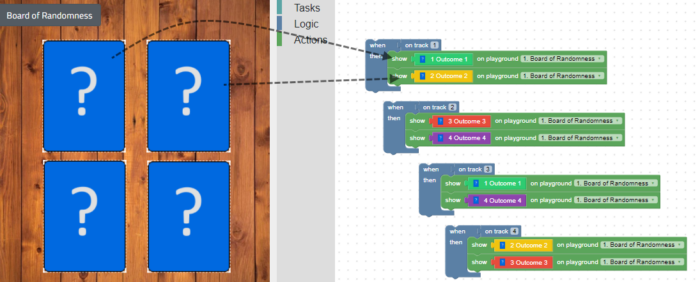
With the previous screenshot of the Creator, each player would only see 2 cards. But players would have different of cards combinations. This leads to even more randomness.
2. The possible outcomes need to be very different.
It’s usual that a Loquiz game only displays one ending, one outcome.
And if your plan is to create a single-usage game, it’s better. If you make several endings (just like on a board game), then it multiplies the work. You do not want to waste your development time on your game, especially if most of the people won’t face some endings.
But it’s a different story if you want to make replayable games.
If you play a board game, you expect to feel a thrill from not knowing the final outcome. Using Loquiz, it will be very important that your game does not look linear, but rather like a tree.
Here is an example from another blog article that I wrote:
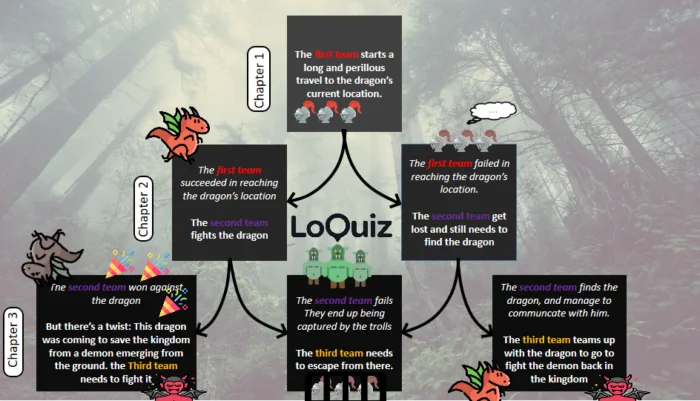
3. There need to be information retention between the opponents
Imagine that you’re playing a Pokémon match against your friend. He has 6 Pokémons, you have 6 Pokémons.
And it’s the 19th match you’re playing together…
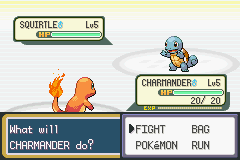
How come a Pokémon match becomes thrilling and repeatable?
The information retention between the opponents.
You don’t know all of their Pokémon. You don’t know what moves his Pokémons know. And you don’t know his global strategy. This lack of information is reciprocated. But little by little, you learn more about your opponent. The outcome change because of this… And the fun keeps going on.
Now let’s talk about Loquiz. How can you apply information retention over a Loquiz game?
Using the randomness (as seen in 1.) and the different outcomes (as seen in 2.), make sure that the opponents own different content from their own device.
Make sure that different tasks will appear on their List/Map/Playground.
4. At a given time, the opponents need to have an asymmetry in their winning chances.
Imagine that you’re with your family, playing Uno.
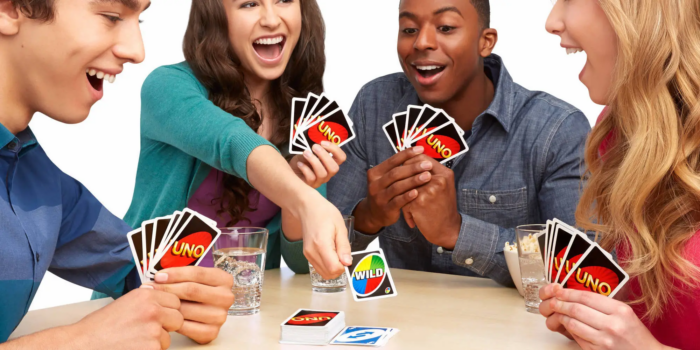
In this card game, your aim is to use all your cards. In the beginning, each player starts with 7 cards. At a given time, some players will find themselves with 10+ cards, while others will struggle to use their one last card.
Here, the asymmetry becomes interesting and thrilling. The player with just one card will do everything to keep their advance, and eventually win. But they know that they can suddenly lose this asymmetry.
On the other hand, the players with 10+ cards will desperately struggle to stop the winning player from using their last card.
Overall, the asymmetry in the player’s situation gives different feelings throughout the game.
When you make a Loquiz game, make sure that you can create a wide gap between the winner and the loser. At the same time, make sure that the loser gets an advantage, whereas the winner can only get slower and slower, before winning.
5. A goal has to be reached, but the other players has to stop you from reaching it
And here is the final principle. What makes a game fun? Or a series? Or a book? A clear goal that the characters need to reach.
That’s something in common for every Loquiz game. We all bring a goal, which the players will fight and struggle to reach until the end.
What if we add an interaction where… Players can stop others from reaching their goals?
For example, the Blue shell in the Mario Kart series. How does it work? Any player can launch this “bomb” to attack the first ranked player in this racing game.
In the case of Loquiz, there are 2 main items you can use to stop your opponents from reaching their goal.
Tool #1: The bomb
You can set up a task as a “bomb”.

When a player steps on it, they can place a bomb anywhere on the map.
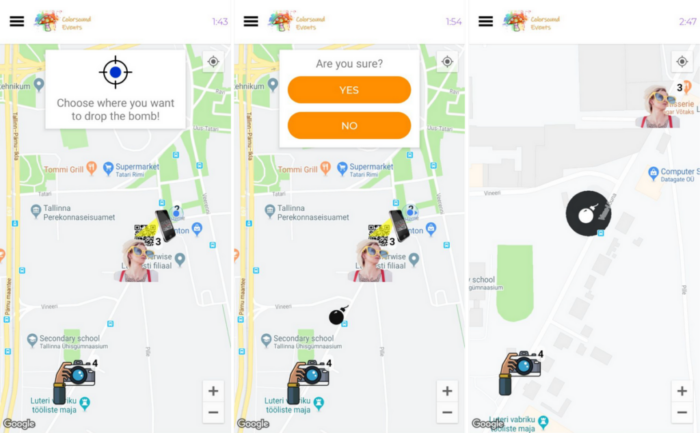
When an opponent player steps on the bomb, then their screen is disabled for 30 seconds.
This one function is basic and fun.
Tool #2: The block “Answer is correct/incorrect” by any team
Let’s use this new block. It was added barely a month before I wrote this article.

Basically, it means that you can change one player’s outcome depending on what other players’ finished as a task. This task is mandatory if you want to add interaction.
However, you might ask me: How can it help a player affect others’ goals? Let’s make an example.
Imagine that we have 2 players defined by the QR code they scanned at the beginning.

Right after, Player one will automatically get a remote control on their playground.

If Player one finishes this task, then something will happen to Player two:

A task saying “Walk 500 meters now!” will open! Though, only Player two will receive it.
How does the consequence work?

Just like this. If it doesn’t seem clear to you, then please contact me. I’ll be happy to explain to you this whole logic.
So here is how the global logic looks like, with my little tool.
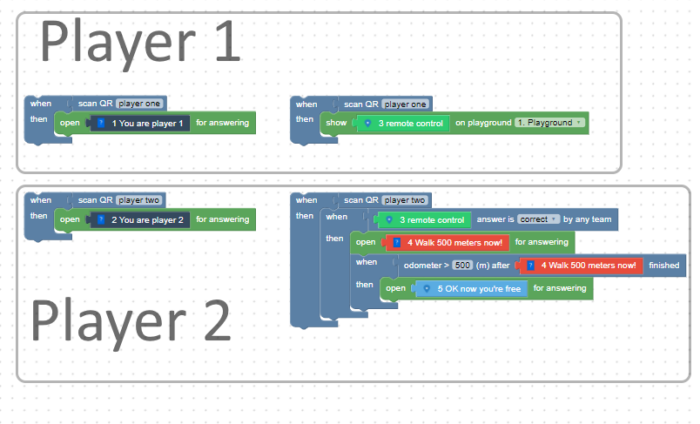
So here are the 5 principles of a replayable and interactive game defined by my own experience as a game creator. When you create a Loquiz game that you want to let the player reuse, make sure you tick all the 5 conditions.
In fact, I take profit of this article to let you know that we’re preparing a series of webinars. The webinar will include workshops. There will be one main goal: we will create a game that can be interactive and replayable. Thanks to this, professional game providers and event managers will have less trouble keeping their clients!
Stay tuned, more information will come! 😎
Related stories
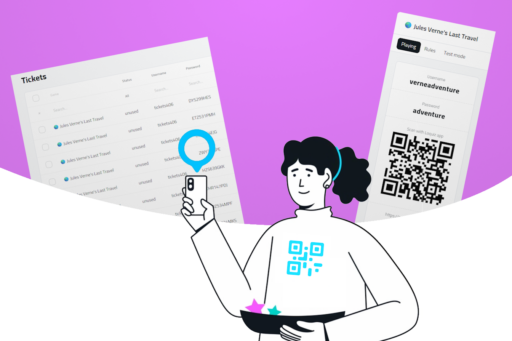
When you offer a Loquiz game, you have two different ways to distribute them: Tickets or username/password/QR. There are fundamental...

Winter is coming, and in terms of team-building events: It’s the high season! Companies are demanding: They want games, but...
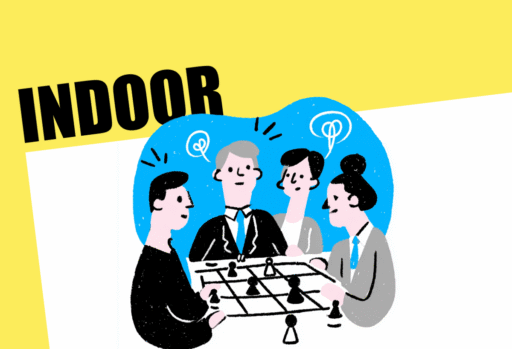
Today, we’re in November. The seasons get colder. Is this a reason to stop ourselves from having fun teambuilding games?...
Start free trial to bring your ideas to life
Sign up and create games, tours, team events and educational content that captures peoples' attention
Start from the scratch or use templates to kickstart!

